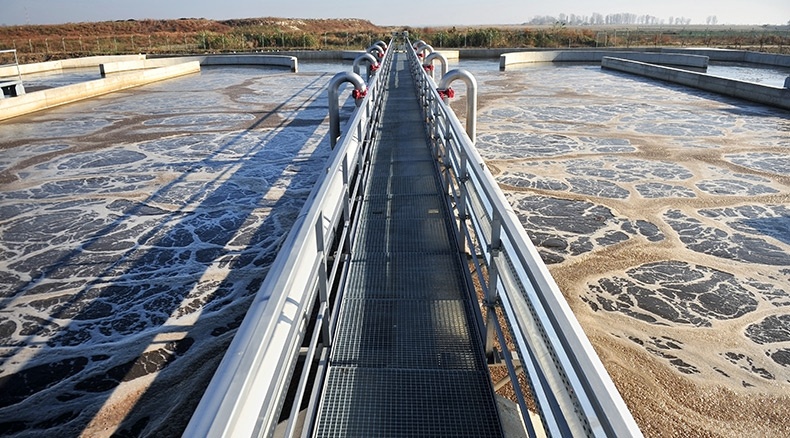
During winter months, it’s important to make sure your home or vacation home is protected against falling temperatures. Temperatures can drop rapidly if the power fails or the heater stops working, causing the pipes to freeze and burst.
Remote temperature monitoring can help you maintain an optimal temperature to prevent frozen pipes from bursting, resulting in thousands of dollars in damage.
Frozen pipes are one of the great headaches of the winter season. According to Freeze Miser, more than 250,000 U.S. families experience frozen and/or burst pipes each year. State Farm reported paying over $181 million for nearly 9,000 claims related to frozen pipe damage, with an average claim exceeding $20,000.
While cold weather locations add to the risk of frozen pipes, homes with pipes in areas with limited or no insulation or are located in weak spots such as the basement and exterior walls are susceptible to freezing and bursting. The map below outlines areas in the United States most likely to experience frozen pipes. If you are among them, remote temperature monitoring is especially important to you.

Why pipes freeze
When a plumbing system operates in temperatures belong 32°F for extended periods, the water in pipes can freeze and expand by 10%. The expansion puts stress on pipes that consequently burst under pressure. As a result, areas in the home become flooded, causing unexpected damage and expenses. Flooding caused by burst pipes also puts stress on homeowners and property owners not knowing when water will be restored or if insurance covers damages. Who wants to spend the coldest months of the year dealing with your insurance company and not being able to have a warm shower?
Vacation homes and rentals are at particular risk
Preventing frozen pipes in your primary residence is usually a simple matter of keeping your heat on and letting at-risk faucets drip. However, averting a freeze in vacation homes, cabins, and rental properties can be trickier as no one is there or responsible for taking precautions. It’s hardly economical to keep your heat on throughout the season, especially if no one is vacating the premises. Plus, accidents like power outages or sudden drafts from opened doors or windows can quickly lead to a pipe disaster. Unfortunately, by the time you find out about frozen pipes, the damage is done.
Get Remote Temperature Alerts
To keep pipes from freezing while you’re away, consider a remote temperature monitoring system like the Sensaphone 400. This cost-effective, user-friendly system is ideal for keeping track of your home temperature and can even alert you when something is amiss. With a temperature-sensing range of -20°F to 150°F (-30° to 65°C), the device can monitor temperatures anywhere in the home including living rooms, attics, and basements.
Often referred to as an auto dialer, this remote temperature monitoring system can serve as a home freeze alarm by sending an alert when temperatures drop dangerously low. You simply set a temperature limit, and the system will call, text, or e-mail you or an emergency contact when temperatures drop below that limit.
As a basic phone-based device, the Sensaphone 400 offers an easy and inexpensive way to remotely monitor conditions. You can change telephone numbers, temperature set points, security codes, and alert messages from anywhere using a standard phone line. You also can call in by phone to check the status of all monitored conditions.
If you don’t have a landline, the Sensaphone Sentinel allows you to receive alarm notifications through a standard internet or cellular connection. You can check the status of monitored conditions or make programming changes at any time on the Sensaphone website or free mobile application.
Who Receives Alarms?
When detecting a problem, the Sensaphone 400 can call up to four people using preprogrammed numbers. Some basic temperature monitoring systems only call one phone number, which makes one person always responsible for receiving and acting on alarm notifications. You can record custom voice alerts and receive alarm messages in your voice
In addition, the Senspahone 4000 will continue to make phone calls until someone responds to the call. That way a trusted friend, caretaker, or property manager can fix the temperature if you’re unable to travel to the location. Multiple alarm recipients also increase the chances that someone will receive an alert in enough time to solve the issue before serious damage occurs.
The Sensaphone 400 remote temperature monitoring system also provides real-time status reports about water leaks, potential break-ins, power outages, and humidity so you can take preventative action and add a layer of protection to your home.
More Than Temperature Monitoring
In addition to serving as a remote temperature monitoring device, the Sensaphone 400 can connect with different sensors to track a variety of environmental conditions such as power, humidity, water leaks, smoke, and break-ins. You can decide on the different conditions you want to monitor in protecting your home.
The system can also connect to contact switches to alert you of unintentionally opened windows or doors that let cold drafts in.
To learn more about installing remote temperature monitoring capabilities in your home or office, contact a Sensphone expert today at 877-373-2700.







